Coastal Science Assistantship Program (CSAP)
Background | Protocol | Requirements | Benefits | Priority Research Areas | Application | Selected Proposals | Student Bios | Contact
Current Students
 Emmanuel Adeniyi
Emmanuel Adeniyi
Louisiana State University; Department of Geography and Anthropology
Major Professor: Lei Wang
Project Title: Cloud-based Implementation and Dissemination Tool for Long-term River Diversion and Land Restoration Assessment near the Mid-Barataria Basin in South Louisiana
River sediment diversions have been used for wetland restoration. Long-term assessment of restoration projects can help in determining diversion efficacy. However, traditional, large geographic, long-term assessment can be costly, subjective and tedious. Existing and planned land monitoring satellites can detect vegetation abundance and suspended sediment concentration in water, while Unmanned Aircraft Systems (UAS) can be used to calibrate that data, at significantly lower cost. Using information collected by these instruments, The research team plans to develop a cloud-based tool to assess the magnitude of land restoration near the Mid-Barataria River Diversion. The team is hopeful this tool can be used for other wetland-river diversion projects, as well. Follsing his graduation, Adeniyi hopes to be a geoinformation specialist providing geospatial solutions to numerous environmental challenges facing the global community.
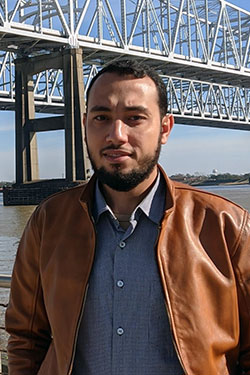 Sherif Mostafa Ahmed
Sherif Mostafa Ahmed
Tulane University
Major professor: Ehab Meselhe
Project Title: Quantifying Sediment Retention and Morphologic Evolution in the Fort St. Phillip Crevasse Complex: Implications to Sediment Diversions
The success of sediment diversions is predicated on not only land building but also creating healthy wetland habitat. The overall goal of Ahmed’s project is to reduce uncertainty in three geotechnical processes – sediment compaction, redeposition, and vegetation productivity – that could determine the ultimate efficacy of both the Barataria and Brenton Sound diversions. Based on data collected in the field, Ahmed will develop numerical models using those three dynamics to provide insight into the possible net gain in marsh elevations for various sediment diversions. Ahmed’s professional goals are to gain further understanding of hydrodynamic and morphodynamic processes and behaviors in marine coastal areas. After completing his master’s, he plans to pursue a Ph.D.
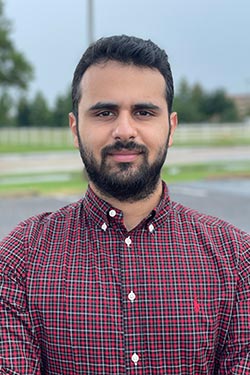 Omar Alawneh
Omar Alawneh
Louisiana State University
Major Professor: Navid H. Jafari
Project Title: Quantifying Geotechnical Properties and Processes in the Fort St. Phillip Crevasse Complex: Implications to Sediment Diversions
Sediment diversions are a beneficial way to help address Louisiana’s rapid coastal land loss. Diversions uniquely restore natural water flow, encourage land-building sediment and cultivate marshes. Alawneh’s project investigates the effectiveness of diversions in both the Barataria and Breton Sound basins using the Fort St. Phillip crevasse as a natural surrogate. Alawneh aims to develop and validate models predicting accuracy in sediment compressibility and erodibility and measure the newly-formed wetland amount. He plans to contribute the findings to a growing database regarding erosional and consolidation processes before newly formed wetlands occur. Alawneh is interested in innovative technologies within the geotechnical field and hopes to gain skills to solve engineering problems in this industry.
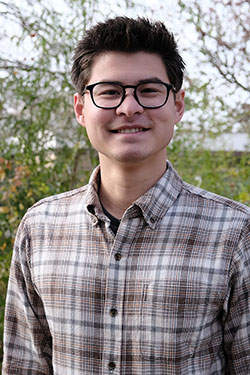 Jacob Cheng
Jacob Cheng
Louisiana State University
Major Professor: John R. White
Project Title: The Effect of ‘Freshening’ by Sediment Diversion Flow on the Porewater Salinity, Nutrient Availability and Water Quality Improvement Functions of Barataria Bay Marsh Soil
Coastal restoration efforts in Louisiana rely on river re-connection with the coastal basins to deliver sediment to these subsiding (sinking) systems. Previous models show surface water salinity will be lower after the Mid-Barataria Sediment Diversion. The question remains, how will this change affect the wetland plants and the microbial pool (all of which control important processes within coastal wetlands) present within the basin’s soil? Feder will be investigating how river reconnection and ultimately freshwater reconnection alters porewater salinity and other biogeochemical processes in a range of coastal systems (i.e., freshwater marsh, brackish marsh and salt marsh). He hopes to expand his quantitative skillset and understanding of coastal processes so that he can pursue a career in designing and implementing wetland restoration projects. Ultimately, Feder hopes to collaborate with scientists, engineers, and policymakers on safeguarding the ecosystem services that our wetland systems provide.
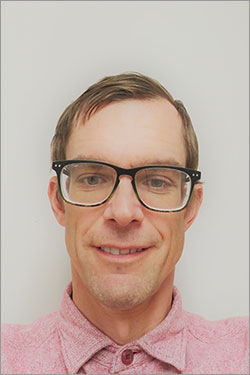 Donald Davidson
Donald Davidson
University of New Orleans
Major professor: Madeline Foster-Martinez
Project Title: How do Physical Properties of Vegetation Modify the In-situ Flow and Sediment Regime
Reestablishing marsh vegetation is integral to Louisiana’s coastal restoration efforts. Many perceive vegetation’s role in land building as adding friction and slowing currents to cause sediment deposits. However, that is not always the case. Dense vegetation can divert water around areas of emerging marsh and prevent sediment-laden water from contributing to land building. This project will study how physical properties (i.e., shape, height, stem width, branching, flexibility, etc.) of vegetation modify water flow and the sediment regime in Bay Denesse. Davisson said he’s interested in the health of estuarine ecosystems. His career goal is to continue utilizing collaborative experiences to help maximize Louisiana’s coastal wetland conservation and restoration plans.
 Santosh Ghimire
Santosh Ghimire
Major Professor: Sabarethinam Kameshwar
Project Title: Hurricane Vulnerability of Aboveground Storage Tanks in Coastal Louisiana
The Louisiana coast contains multiple ports, oil and gas installations and petrochemical facilities. Aboveground storage tanks (ASTs) are used within these industrial environments to store substances, such as crude oil, petrochemicals and other hazardous materials. Ghimire will calculate and evaluate ASTs’ vulnerability to natural disasters like hurricanes. This knowledge will fill in gaps and help determine how effective regional hurricane risk mitigation measures are in preventing AST failure. Ultimately, this project will help preserve working coastal communities by reducing the likelihood of AST failures. After obtaining his master’s, Ghimire intends to work as a structural engineer, analyzing and designing infrastructures so communities will be more resilient against various hazards.
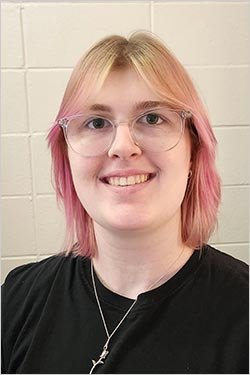 Elizabeth Granier
Elizabeth Granier
Nicholls State University, Department of Biological Sciences
Major Professor: Jonathan M. Willis
Project Title: Elucidating the Successional Trajectories of Louisiana Barrier Island Vegetation Communities through Data Mining
Barrier islands – which are vulnerable to hurricanes and tropical storms – play an integral role in mitigating coastal land loss. The state has made considerable investment in barrier island restoration, which includes vegetation plantings to armor islands against storms. Currently, data gaps exist regarding vegetation propagation and community composition through time on restored barrier islands. This project plans to fill in those data gaps by utilizing existing monitoring data from restoration projects, as well as geospatial data – such as LIDAR and satellite imagery – to determine land stability for various vegetation habitat types. By filling in the gaps, this research’s results could aid coastal restoration planners in determining where and when follow-up plantings are needed to enhance barrier island stability after hurricanes and high-energy storms. After she completes her masters, Granier wants obtain employment on the federal level to continue research on the conservation of fragile environments, with a focus on plant conservation and remediation.
 Anissa Hyde
Anissa Hyde
Louisiana State University
Major Professor: Thomas Douthat
Project Title: Flooding, Migration, and the Coastal Master Plan: Linking Small Areas and Regional Dynamics to Big Events, Long-term Stressors, and Planning Processes
Large-scale disasters such as hurricanes, as well as sea level rise and coastal land loss, result in long-term stressors on coastal communities. This project aims to predict how disaster events cause human population migration – into, out of, and within the state – independent of normal migration patterns, as well as how the sensitivities to event-based migration may vary. Hyde will study how communities’ sociodemographic and economic statuses could reveal information not previously considered during community planning. The research team hopes the resulting project model could be utilized by CPRA within the Coastal Master Plan and to inform future population modeling predictions. After completing her degree, Hyde wants to work with a government agency focusing on urban resiliency. She is interested in program management, communication and science policy.
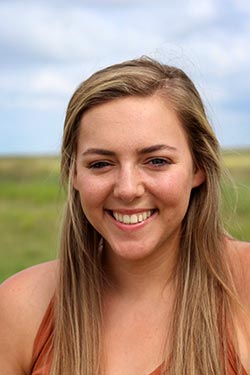 Skylar Liner
Skylar Liner
Louisiana State University
Major Professor: Brian Roberts
Project Title: Can Ribbed Mussels Augment Coastal Restoration Projects in a World of Rising Seas?
Sea level rise (SLR) has been an increasing threat to critical coastal wetlands across the world. Louisiana’s coastal wetlands are experiencing the highest SLR impacts, requiring intervention efforts in the form of coastal restoration projects. Examples of coastal restoration projects most prominently used are sediment diversions and living shorelines. Liner’s research will focus on understanding the potential of the ribbed mussel (Geukensia spp.) for augmenting living shoreline creation and productivity with the increasing impacts of SLR. The research takes place in two parts: part one utilizing a marsh organ to evaluate the ribbed mussels’ resilience to differing inundation periods projected with SLR; part two will observe the plant responses to low and high densities ribbed mussels. Liner hopes to contribute to the preservation of Louisiana’s coastal ecosystems and the communities within them. Her family’s strong ties to coastal Louisiana’s bayous and fishing communities inspire her efforts. Ultimately, she plans to use her master’s degree to create a career in the government sector by participating in large-scale restoration projects and outreach efforts across the Louisiana coast.
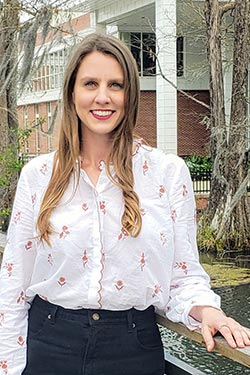 Bonnie J. Slaton
Bonnie J. Slaton
University of Louisiana at Lafayette
Major Professor: Paul Leberg
Project Title: Assessing Resiliency of Coastal Seabird Communities Following Coastal Restoration and Hurricane Disturbance
Coastal islands in the Terrebonne and Barataria basins are critical habitats for several threatened species facing range-wide impacts due to climate change. Slaton will study the effects of storms and restoration on successional processes that control avian populations. She will compare extensive pre-storm and current island conditions, assessing restored and unrestored islands and the wildlife that inhabit them, such as brown pelicans (Pelicanus occidentalis). Ultimately, this project will help inform future restoration practices. After obtaining her master’s, Slaton plans to work as a non-game avian biologist on the Louisiana coast, protecting bird species and their habitats.
 Abhishek Tiwari
Abhishek Tiwari
Louisiana Tech University
Major Professor: Jay Wang
Project Title: Development of Design Criteria for the use of Articulating Concrete Mats and Geosynthetic Separator Fabric as Protective Features for Earthen Containment Dikes Exposed to Localized Wave Forces
Coastal wetland loss in Louisiana is a complex issue. Solutions include constructing containment dikes to restore and protect coastal habitats. Earthen dikes along the shoreline are typically built on soft clay, silts or fine sands and are different from levees because the dikes are subjected to continued damaging high current, wave and pore water pressure conditions. This project involves developing construction criteria for earthen dikes – using geosynthetic separator fabric and concrete mats as protective features – for coastal marsh creation. Ultimately, the project aims to deliver detailed step-by-step procedures for earthen dike construction. After completing his master’s and doctorate degrees, Tiwari hopes to join the faculty at a prestigious research institution and continue research that benefits communities, while also mentoring upcoming generation of scholars.
